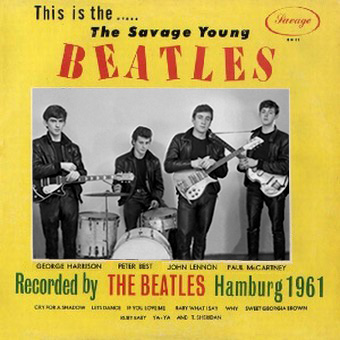Greetings my fellow alternate history fans!
As you can probably tell by my username, I've been a fan of The Beatles for as long as I can remember. However, it is a little bit difficult to be the fan of a group that hasn't released anything remotely new in over 23 years. Their rather extensive catalog makes up for this somewhat, but I've always wondered what would have been if The Beatles stayed together and were still an active band today, much like the Rolling Stones in our timeline. I was therefore inspired to start up this timeline.
Up to 1970 will play out much like OTL with some changes here and there. I'll also change some things to (hopefully) keep The Beatles together.
Lastly, keep in mind that this is my first ever foray into alternate history, so any and all feedback is very much welcome.
With that, let the journey begin...
THE BEATLES ALBUM DISCOGRAPHY (Up to 1974)
Der Top Ten Club präsentiert Die Beat Brothers (1961) [Rare, Local limited release]
Please Please Me (1963)
With The Beatles (1963)
A Hard Day's Night (1964)
Beatles For Sale (1964)
Help! (1965)
Rubber Soul (1965)
Revolver (1966)
Sgt. Pepper's Lonely Hearts Club Band (1967)
Magical Mystery Tour (1967) [US only release]
A Doll's House (1968)
The Beatles (White Album) (1968)
Abbey Road (1969)
Let It Be (1970)
All Things Must Pass (1972)
Mind Games Forever (1973)
Band On The Run (1974)
As you can probably tell by my username, I've been a fan of The Beatles for as long as I can remember. However, it is a little bit difficult to be the fan of a group that hasn't released anything remotely new in over 23 years. Their rather extensive catalog makes up for this somewhat, but I've always wondered what would have been if The Beatles stayed together and were still an active band today, much like the Rolling Stones in our timeline. I was therefore inspired to start up this timeline.
Up to 1970 will play out much like OTL with some changes here and there. I'll also change some things to (hopefully) keep The Beatles together.
Lastly, keep in mind that this is my first ever foray into alternate history, so any and all feedback is very much welcome.
With that, let the journey begin...
THE BEATLES ALBUM DISCOGRAPHY (Up to 1974)
Der Top Ten Club präsentiert Die Beat Brothers (1961) [Rare, Local limited release]
Please Please Me (1963)
With The Beatles (1963)
A Hard Day's Night (1964)
Beatles For Sale (1964)
Help! (1965)
Rubber Soul (1965)
Revolver (1966)
Sgt. Pepper's Lonely Hearts Club Band (1967)
Magical Mystery Tour (1967) [US only release]
A Doll's House (1968)
The Beatles (White Album) (1968)
Abbey Road (1969)
Let It Be (1970)
All Things Must Pass (1972)
Mind Games Forever (1973)
Band On The Run (1974)
Last edited:

